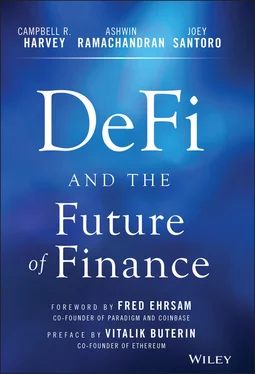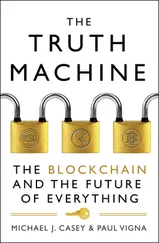1 Centralized Control. Centralization has many layers. Most consumers and businesses deal with a single, localized bank, which controls rates and fees. Switching is possible, but it can be costly. Further, the U.S. banking system is highly concentrated. The four largest banks have a 44 percent share of insured deposits compared with 15 percent in 1984. 2 Interestingly, the U.S. banking system is less concentrated than other countries, such as the United Kingdom and Canada. In a centralized banking system, one consolidated entity attempts to set short-term interest rates and to influence the rate of inflation.This phenomenon reaches beyond the legacy financial sector to tech players like Amazon, Facebook, and Google, who now dominate industries like retail sales and digital advertising.
2 Limited Access. Today, 1.7 billion people are unbanked, making it very challenging for them to obtain loans and to operate in the world of internet commerce. Further, many consumers must resort to payday lending operations to cover liquidity shortfalls. Being banked, however, does not guarantee access. For example, a bank may not want to bother with the small loan that a new business requires. Instead, it may suggest a credit card loan, which carries with it a borrowing rate well above 20 percent per year – a high hurdle rate for finding profitable investment projects.
3 Inefficiency. A centralized financial system has many inefficiencies. Perhaps the most egregious example is the credit card interchange rate that causes consumers and small businesses to lose up to 3 percent of a transaction's value with every swipe due to the payment network oligopoly's pricing power. Remittance fees are 5–7 percent. Time is also wasted in the two days it takes to “settle” a stock transaction (officially transfer ownership). In the Internet age, this seems utterly implausible. Other inefficiencies include costly (and slow) transfer of funds, direct and indirect brokerage fees, lack of security, and the inability to conduct microtransactions, many of which are not obvious to users. In the current banking system, deposit interest rates remain very low and loan rates high because banks need to cover their brick-and-mortar costs. The insurance industry provides another example.
4 Lack of Interoperability. Consumers and businesses deal with financial institutions in an environment that locks interconnectivity. It is well-known that the U.S. financial system is siloed and designed to sustain high switching costs. Moving money from one institution to another can be unduly lengthy and complicated. For example, a wire transfer can take three days to complete.In an attempt to mitigate this issue within the world of centralized finance, in 2019 Visa tried to acquire Plaid, 3 a product that allows any company to plug into an institution's information stack with the user's permission. Though this was a strategic move to help Visa buy some time, it did not address the fundamental problems with the current financial infrastructure.
5 Opacity. The current financial system is not transparent. Bank customers have very little information on the financial health of their bank and instead must place their faith in the limited government protection of FDIC insurance on their deposits. Further, it is difficult for them to know if the rate they are offered on a loan is competitive. Although the consumer insurance industry has made some progress with fintech services that offer to find the “lowest” price, the loan market is very fragmented – yet competing lenders all suffer from the system's inefficiencies. The result is that the lowest price still reflects legacy brick-and-mortar and bloated back-office costs.
The implications of these five problems are twofold. First, many of these costs lead to lower economic growth . For example, if loan rates are high because of legacy costs, high-quality investment projects may be foregone, as explained previously. An entrepreneur's high-quality idea may target a 20 percent rate of return – precisely the type of project that accelerates economic growth. If the bank tells the entrepreneur to borrow money on their credit card at 24 percent per year, this seemingly profitable project may never be pursued.
Second, these problems perpetuate or exacerbate inequality . Across the political spectrum, most people agree there should be equality of opportunity: a project should be financed based on the quality of the idea and the soundness of the execution plan and not by other factors. Importantly, inequality also limits growth when good ideas are not financed. Though purported to be the land of opportunity, the United States has one of the worst records in migrating income from the bottom quartile to the top quartile. 4 Inequality of opportunity arises, in part, from lack of access to the current banking system, reliance on costly alternative financing such as payday lending, and the inability to buy or sell in the modern world of e-commerce.
These implications are far-reaching, and, by any calculations, this is a long list of serious problems endemic to our current system of centralized finance. Our financial infrastructure has failed to fully adapt to the digital era in which we are living. Decentralized finance offers new opportunities. The technology is nascent, but the upside is potentially transformational.
Our book has multiple goals. First, we identify the weaknesses in the current system, including discussion of some early initiatives that challenged the business models of centralized finance. Next, we explore the origins of decentralized finance. We then discuss a critical component of DeFi: blockchain technology. Next, we detail the solutions DeFi offers and couple this with a deep dive on some leading ideas in this emerging space. We then analyze the major risk factors and conclude by looking to the future and attempt to identify the winners and losers.
1 1.See Alan White, “David Graber's Debt: The First 5000 Years,” Credit Slips, June 24, 2020, https://www.creditslips.org/creditslips/2020/06/david-graebers-debt-the-first-5000-years.html.
2 2.Dean Corbae and Pablo D'Erasmo, “Rising Bank Concentration,” Staff Paper #594, Federal Reserve Bank of Minneapolis, March 2020, https://doi.org/10.21034/sr.594.
3 3.Plaid, http://plaid.com.
4 4.R. Chetty, N. Hendren, P. Kline, and E. Saez, “Where Is the Land of Opportunity? The Geography of Intergenerational Mobility in the United States,” Quarterly Journal of Economics 129, no. 4 (2014): 1553–1623; Amber Narayan et al., Fair Progress?: Economic Mobility Across Generations Around the World, Equity and Development, Washington, DC: World Bank, 2018.
II THE ORIGINS OF MODERN DECENTRALIZED FINANCE
A BRIEF HISTORY OF FINANCE
Even as today's financial system is plagued with inefficiencies, it is far better than those of the past, where market exchanges were peer to peer and bartering required two parties' needs to match exactly. Out of this, an informal credit system emerged in villages whereby people kept a mental record of “gifts.” 1
Modern coinage came much later, first emerging in Lydia around 600 BCE and providing what we think of as today's functions of money: unit of account, medium of exchange, and store of value. Important characteristics of money included durability, portability, divisibility, uniformity, limited supply, acceptability, and stability. Bank notes, originating in China, made their way to Europe in the thirteenth century.
Nonphysical transfer of money originated in 1871 with Western Union. Figure 2.1shows a copy of an early transfer for $300. Notice how the fees amount to $9.34, or roughly 3 percent. It is remarkable that so little has changed in 150 years: money transfers are routinely more expensive, and credit card fees are 3 percent.
Читать дальше












